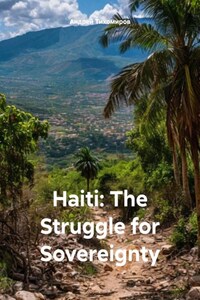General information about Haiti
Haiti, officially the Republic of Haiti, is a country on the island of Hispaniola in the Caribbean Sea, east of Cuba and Jamaica, and south of the Bahamas. It occupies three-eighths of the western part of the island, which it shares with the Dominican Republic. Haiti is the third largest country in the Caribbean, and with an estimated population of 11.4 million, is the most populous country in the Caribbean. The capital and largest city is Port-au-Prince.
The island was originally inhabited by the Taino people. The first Europeans arrived here in December 1492 during the first voyage of Christopher Columbus, founding the first European settlement in America, La Navidad, on the territory of the modern northeast coast of Haiti. The island was part of the Spanish Empire until 1697, when the western part was ceded to France and subsequently renamed San Domingo. French colonists established sugar plantations, where slaves brought from Africa worked. At the height of the French Revolution, enslaved people, Maroons and free people of color began the Haitian Revolution (1791-1804) led by former slave and general of the French army Toussaint Louverture. Napoleon's troops were defeated by Toussaint Louverture's successor, Jean-Jacques Dessalines (later Emperor Jacques I), who proclaimed the sovereignty of Haiti on January 1, 1804, which led to the massacre of the French. Haiti became the first independent State in the Caribbean, the second republic in the Americas, the first country in the Americas to officially abolish slavery, and the only country in history founded as a result of a slave revolt. This is how the first revolution in Latin America ended, which became "one of the largest events in the liberation struggle of peoples, in which the Haitian people wrote such a glorious page" (Slezkin L. Y. The revolution of Negro slaves on the island of San Domingo (Haiti) in 1791-1803.– Scientific notes on modern and modern history. Moscow 1956, issue 2, p. 206). The first century of independence was characterized by political instability, international isolation, unsustainable debt payments to France and a costly war with the neighboring Dominican Republic. Political instability and foreign economic influence caused the occupation of the United States from 1915 to 1934. A series of unstable presidencies was followed by almost three decades of dictatorship under the Duvalier family (1957-1986), which led to state-sanctioned violence, corruption and economic stagnation.










